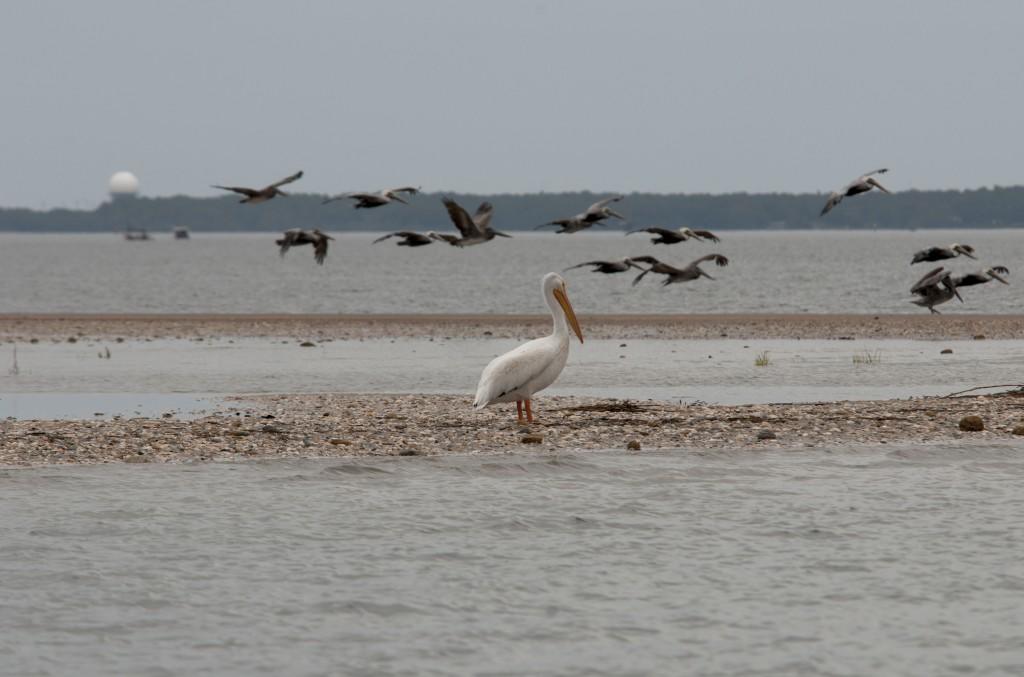Written by Tara C. McIver, Biological Technician
Recently, while on a shorebird survey in Rich Inlet, volunteer Marlene Eader and I spotted an American White Pelican among a flock of Brown Pelicans on the south end of Figure 8 Island. They are unmistakable birds. One of the first things you notice about the White Pelican, aside from its striking white appearance, is its size. White Pelicans have a wingspan of 8-9.5 feet depending on the sex, far exceeding the wingspan of the Brown Pelican (6.5 feet). White Pelicans also have a remarkable orange bill and legs. Unlike the Brown Pelican, the American White Pelican does not dive for food. Instead, it catches its prey by dipping its large bill in the water to scoop up prey.
An American White Pelican seen in October on the Cape Fear River looks on as its smaller brown relatives take flight. Another like this one was seen at Rich Inlet in November. By Lindsay Addison
This particular White Pelican flushed to a small shoal in Rich Inlet and three Brown Pelicans took up the same amount of space as the one White Pelican. Although White Pelicans are not common here, White Pelicans have been spotted almost yearly in the Cape Fear River. One volunteer called Audubon this year because she saw 23 White Pelicans on the waterway in front of her house.
The American White Pelican is not a resident of North Carolina; it is just passing through on its way to its wintering grounds in Florida, the Gulf states, and south Texas. In the spring, these birds will migrate thousands of miles back to their breeding grounds in the Midwest and Canada. This was the first time Marlene or I had ever seen a White Pelican -- it was a extraordinary sighting.





